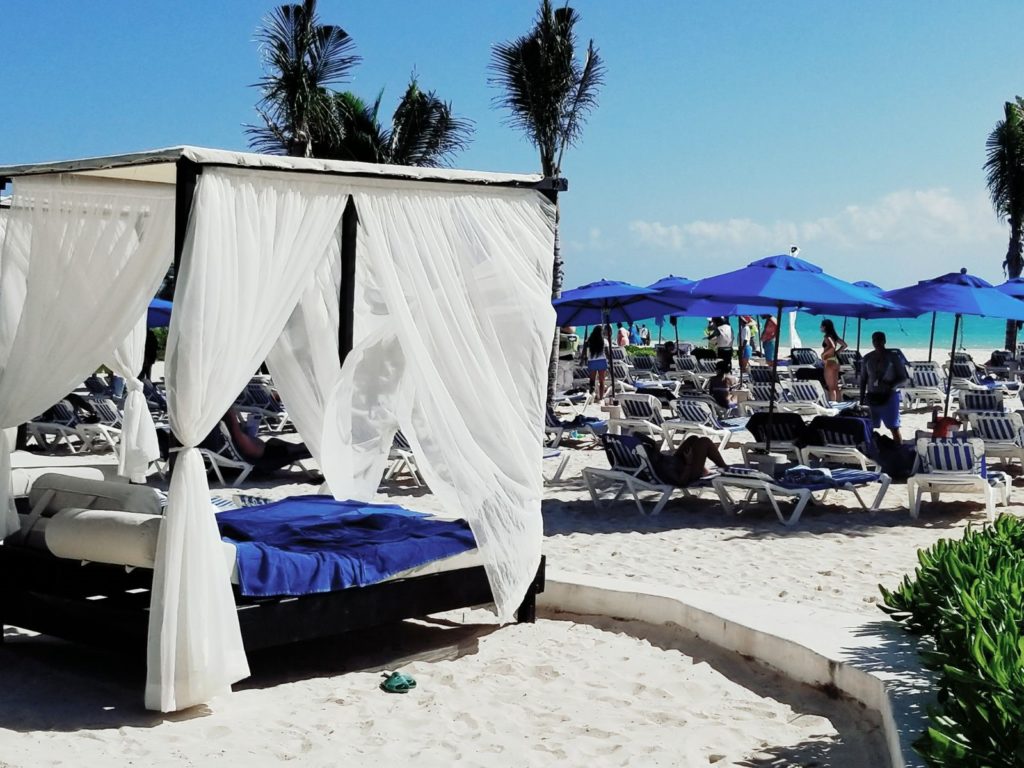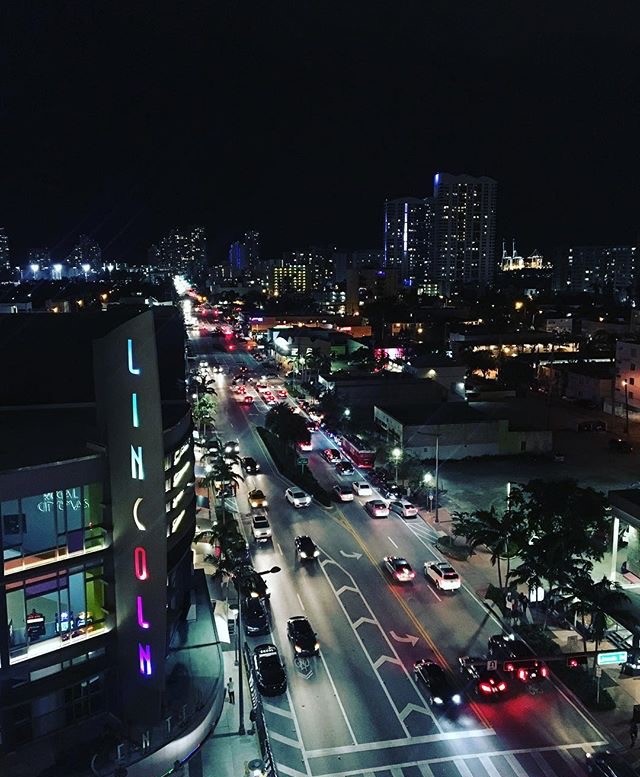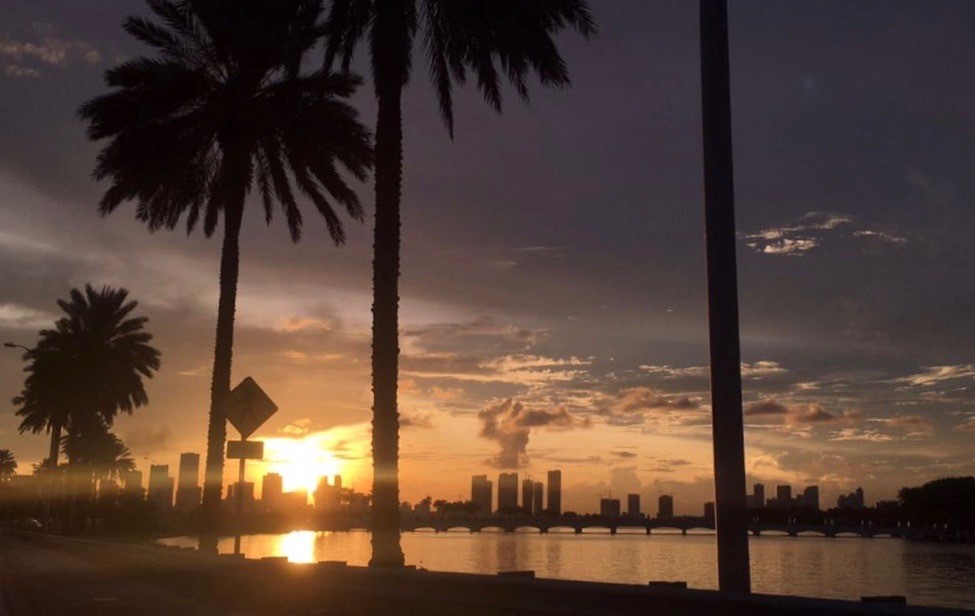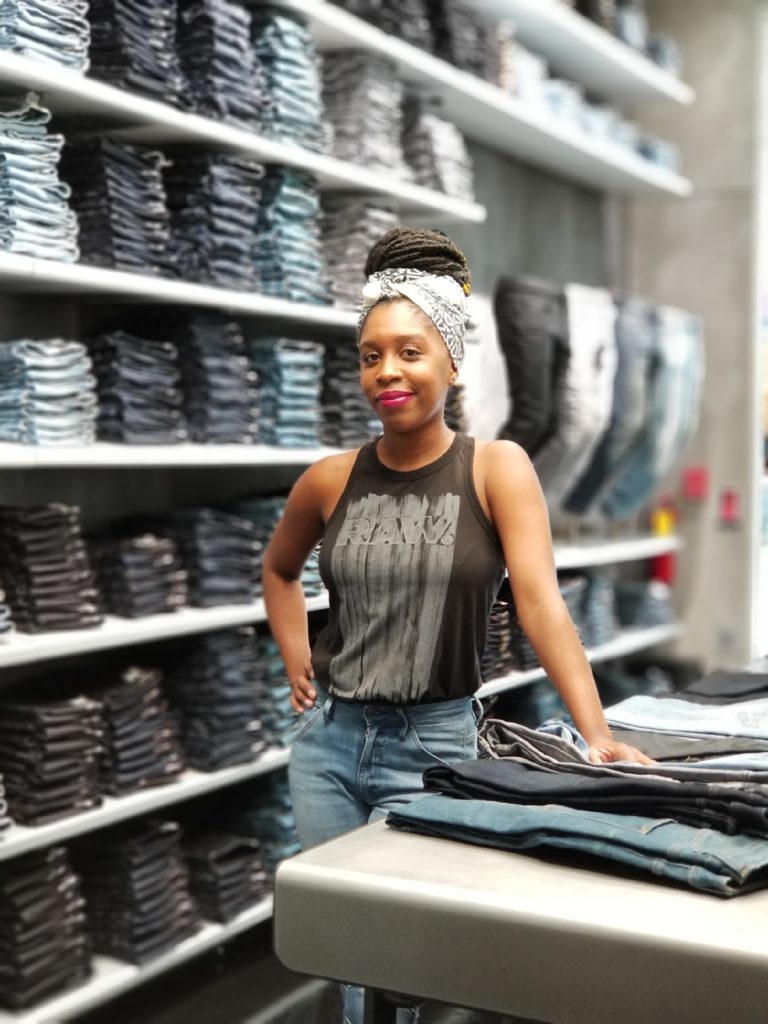Winnie Tchamlesso: Denimwall, Store Manager
Winnie learned early on that weather matters. It was a skill she developed as a store manager in the outdoor shopping district of Miami. June was hurricane season. July averaged in the 90s. Beaches on the southern tip of Florida were still empty in August.
Winnie steadied her Cuban coffee as she unlocked the door. Once inside, she flipped on the lights. Floor mats were still damp. She set down the styrofoam cup. The ringing of the store alarm stopped.
Winnie checked last year’s sales. Then looked outside one more time.
The Denimwall and CB4 Interview
Q: How did you effectively incorporate weather conditions into your store?
The store I managed was on Lincoln Road Mall, but people are not always in that shopping mindset there because it’s outdoors. On South Beach, all the store windows are tinted. It helps with the glare so people can see the mannequins through the window.
You had to keep an eye out for the weather. Then plan ahead based on the forecast. We scheduled all the operational tasks like replenishing items in the store while it was still raining or when temperatures were at their highest.
There’s more of a rush when it cools down. That’s when you schedule the most staff on the floor to facilitate sales. You just want to focus on closing sales during those peak hours.

Q: How do you recognize the habits of shoppers between seasons?
For us, high season is during the winter. Even the fall, starting in October and all the way up to March. That’s usually when the people from colder parts of the country migrate down to Miami because it’s still warm here. It’s bearable for people that are not used to the really hot weather.
We call them snowbirds and this includes people from other countries too, especially Canadians. A lot of them have vacation homes here in Miami and come down with their families. These are the people that spend a lot of money. Especially when it’s people from different parts of the world where they don’t have access to these labels. That becomes the high season. Also, it’s the holidays so people are predisposed to spending more.
It becomes a lot easier for us to make our goals.
Summertime is the low season because it’s extremely hot and tough to get customers out. You notice the dramatic change even more when you work on South Beach. There is absolutely no foot traffic from 11AM, until about 6PM, when the sun starts to go down. It’s just too hot. When you work in a business that depends on those daily sales, the weather can become problematic.
Q: What have you learned about these customers?
What happens with Latin American customers — and this will definitely change on a yearly basis — is that Latin American customers are reliant on the money exchange. Sometimes Brazilians will come to Miami more, sometimes Argentinians. It depends on the exchange rate, it depends on how expensive it is for them to buy dollars and what it looks like to spend their money here.
For example, last year we barely had any Brazilian customers and it was because the exchange rate was so high for them. By the time they got down to Miami, they barely had any spending money. This year it’s happening with Argentinians. They are spending very little even though they’re really big on the brands. It’s because it’s so expensive for them to shop.
Knowing the economic trends within the Latin American countries will let us know if our summer will be a little bit better or worse. For those people, it’s usually cheaper to fly in the summertime because it’s winter in their countries. But how much they’re spending in Miami depends on the exchange rate.
Q: Does the weather affect customer service in Miami Beach?
In this weather, you don’t feel like wearing clothes to begin with. It controls everything. People on South Beach are mostly just walking around having fun on their vacation. They’re not really trying to carry their shopping bags around and not wanting to spend their money on doing anything else besides partying. We had to cater to that, like a concierge service. We recommended restaurants. Which clubs to hit up. Our favorite beaches. Sometimes we even offered customers a drink while they shopped. They loved that. It became a more personal shopping experience.

You never want to tell the staff that it’s ok to give up. It’s really hard to tell what kind of people are going to spend, so it’s important they talk to everyone. You never know. Even if it’s a teenager. That kid could come back the next day with his parents and they’ll buy him the whole store. Or maybe it’s the guy in shorts and sandals that decides then that he needs a new wardrobe.
Q: How did you motivate your staff under these conditions?
Engage everyone.
If someone took the time to come into your business and they’re talking to you and looking around and showing interest, the odds are in your favor. The challenge is to turn that around into a sale. You have to work on personal conversion. How many people you talk to actually end up buying from you? If that number is low, it’s pretty obvious what you need to do.
You have to focus on making the most out of the customer that you have in the store and in the fitting room. That person might come in for one thing, but if you’re skilled enough to let them know what they want and what they need, you can really build a sale. And there are days where you will only have that one high roller, so you have to make sure that you are giving them 100% as a sales person.
Q: Are there times that sales are lost because the store couldn’t capitalize on weather conditions? How could businesses better prepare for these conditions?
I worked at Urban Outfitters. They did their buying regionally so it was actually really easy for us to do the merchandising. We had someone that understood Miami; that it’s always hot. We always had items that catered to being on South Beach and that made it easy to retain customers.
This guaranteed that whatever we had on display was reflective of our weather. Where I work now, on the other hand, we buy a collection that is already made globally. We have to buy into what is available to us. We have to buy a collection that is universal.
We don’t have much of a choice. Jackets and layering pieces are purchased, even though they might not work as well in our market.
So we try to make sure that those lighter pieces that we have throughout the year, we bring them to the front of the store. We let our customer know that we have lighter fabrics, brighter colors. This is what sells here in Miami and on South Beach, specifically. We always would want to have shorts available to customers because someone who knows the brand might be walking on South Beach and is more likely to buy a piece like that rather than a winter coat.
It’s important that we have items that are reflective of the customers and those needs.

Q: Does the weather affect KPI goals?
South Beach is tougher when it comes to conversion. I think that conversion for stores on South Beach should not be a measure of their success only because you have to understand that there are literally groups of people in the summertime that are all walking in together just to get relief from the sun. They might be coming into the store to get five minutes of AC. So the traffic numbers are not really reflective of actual customers that are coming in to shop.
Other times, you have a family of 6 or 7 and it will be one big purchase with the whole family. It’s hard to break that down into an actual KPI because you are dealing with numbers that are not accurate indications of what’s happening in the store. That makes it hard to rely on those numbers.
But you can use your average sale per customers or average piece per customer to get more insight into what is happening. What they’re buying and how much they’re spending. Rather than focus on all the people that are coming in because it’s not always what’s happening.
Q: What are some of the advantages Urban Outfitters has under these conditions, compared to higher end businesses?
At Urban Outfitters, it was a lot easier to make sales because the price point was lower and you could just pick up a swimsuit or a t-shirt and that was relatively affordable for everyone. It’s a little harder for high-end brands to make that transition. I think that’s a challenge for Lincoln Road.
Urban Outfitters was self-service. You didn’t have to get too involved. We worked more on the presentation and let the product sell itself. Being that it was a lower price point, it worked. When it comes to higher end brands, it’s all about product knowledge. It’s about you educating customers on why they need to spend more when they have cheaper options.
It’s about letting them know the construction, the process so that the final product can be worn in the club. The cold. Or in this ridiculous heat.

About the Interviewee
Winnie Tchamlesso is the store manager at Denimwall’s top-performing G-Star RAW location in Miami, Florida. The store’s increase in sales were the highest across the entire East Coast franchise. Winnie graduated from Miami International University with a degree in Fashion Merchandising and has 12 years of retail experience. She lives in Miami with her husband, pet rabbit and her son, Noah.
About the Interviewer
Jessica Amodeo is a freelance writer with eight years of retail experience in management at top brands like G-Star RAW. She received her MFA from NYU in 2012, and currently lives in Los Angeles.
To learn more about how CB4 helps retail operations teams improve floor execution and improve same-store growth, take a look at our Content Library, where you’ll find product overviews, case studies, and more.


